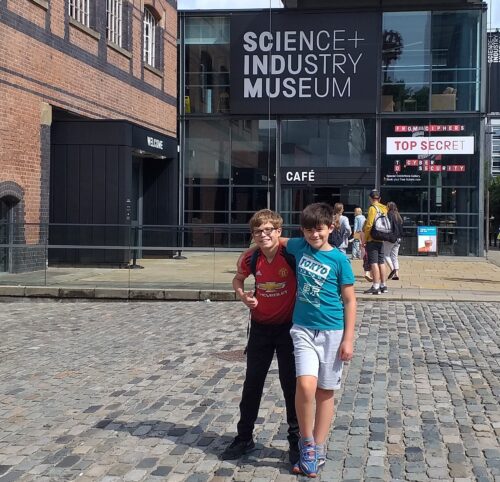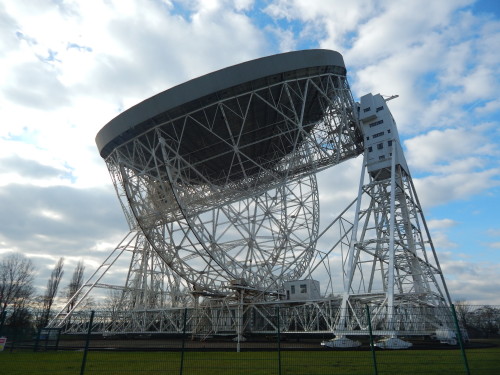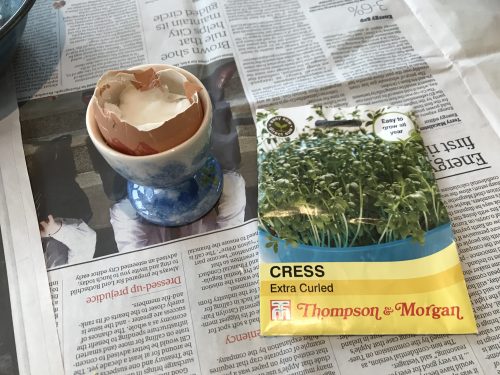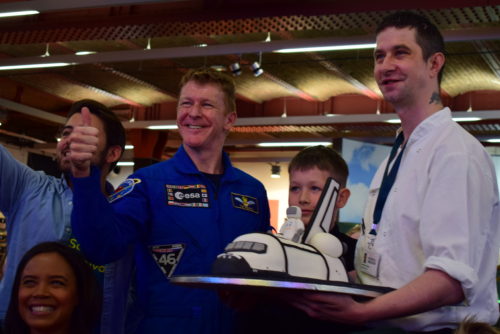AD/Gifted. My 9 year old boy really loves science and nature. We try to encourage his interests at home, so over the last few years many of the presents under the tree have been things Father Christmas thought he might like. He’s had a brilliant globe, some great things to help him hunt for minibeasts outside, he has a whole constellation of glowing stars on his ceiling and he’s got his very own miniature orrery. This week we’ve picked our top ten STEM toys for this Christmas.
2 in 1 Earth and Constellations Globe
The Earth and Constellation Globe has a day-time and night-time view and is in fact two globes in one. In the daylight the 22.8cm diameter globe shows political boundaries, oceans, equator, longitude and latitude lines, country names, capital cities and other major cities for each country in the world. By night the illuminated star map shows constellations with their common names.
Addict A Ball
Addict A Ball is a seriously addictive 3D maze puzzle which contains 138 numbered stages of spirals, drops, swinging arms, flips and slides. You guide the ball through each stage, all the time Addict A Ball is challenging your dexterity, hand-eye coordination and patience. It’s great fun, and even us grown ups like playing with it!

Stikbots
These multi award winning figures have been around for a little while now. They’re pretty keenly priced, so make great stocking fillers, or pocket money treats. They have suction cup hands and feet which allow them to be posed in lots of different ways. They’re designed so you can use the free StikBot stop frame animation app to make your own short animations. They’re great fun.
Glow Starry Night Glow-in-the-Dark Stars
These stars are a great little stocking filler. The stars can be stuck on walls and ceilings, then at night, turn off the lights and they glow in the dark. Arrange them however you like, they’re a lovely addition to the bedroom of a junior astronomer!
See the World Through Others’ Eyes
See the World Through Others’ Eyes is a really interesting science set. It includes a set of glasses with interchangeable lenses which allow you to see the world in 20 different ways. These include; cat; dog; rat; horse; cow; elephant; fish; shark; cuttlefish; bird; eagle; T-rex; unicorn; astronaut; colour blindness; new born baby; near vision; fly; bee and dragonfly. The box also contains detailed instructions and explanations about how the lenses work and how various animals, including humans see. You can read our full review here.

Animal Projector & Nightlight
The Animal Projector & Nightlight projects 24 beautiful colour animal images onto your walls and ceilings. The animal images are clear and sharp, up to one metre wide. You just turn the lens head to focus. This STEM set includes three discs and 24 fantastic animal images and doubles up as a cool night light.
EUGY Build Your Own 3D Model
Build your own 3D models with these beautifully detailed but simple miniature animal figures. They’re made from environmentally friendly, biodegradable card with natural eco-friendly ink and non-toxic glue. There is a whole range of different animals to choose from and build at home, they’re suitable for ages 6+ and cost around £7.99.

Outdoor Adventure Magnifier
The Outdoor Adventure Magnifier is a handheld 2x-3x-4x magnifier which is ideal for on-the-go explorations, field trips and outdoor adventures. We put it to the test in our garden, taking a closer look at some plants and flowers and having a good look at some tiny aphids we found feasting on my rose bush. The magnifying glass is a pretty essential bit of kit and has so many uses. It costs around £12.99 and although that may seem a little pricey, it’s much better quality than cheaper kids magnifying glasses.
Outdoor Adventure Binoculars
The Outdoor Adventure Binoculars were a real hit. They are pocket-sized and light weight and have 4x magnification; 30mm glass lenses and they have a break-away lanyard for safety. We especially liked the built-in compass on the top, which helped us to talk in greater depth about navigation skills and North – South – East – West (or Never Eat Shredded Wheat as we’ve been teaching him).
My Desktop Solar System
An orrery is a mechanical model of the Solar System that illustrates the relative positions and size of the planets, although totally accurate scaling cannot be achieved given the very large distances and differences. Future astronomers will love having this Solar System in miniature on their desktop. Instructions include a secret code to unlock fascinating online facts about each planet in our Solar System.
So that’s it, our top ten STEM toys for junior scientists this Christmas. What STEM toys can your kids not live without?


























